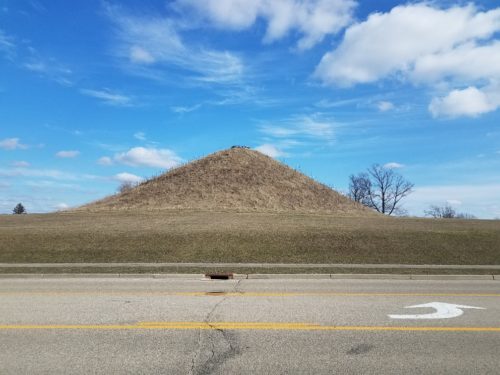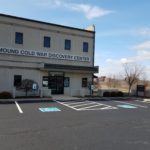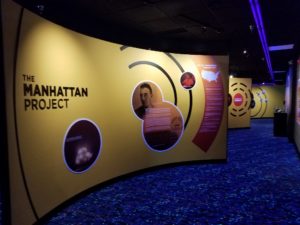
CWP Blog | CWP
Discussions with Deb: The Mound Museum
February 28, 2020
February 28, 2020
CWP
CWP Blog
By Deb Jerison
The Mound Cold War Discovery Center, housed in the old Mound Laboratory Radioisotope Thermoelectric Generator (RTG) Administration building at 1075 Mound Street, Miamisburg, Ohio is across the street is the Adena burial mound that gave the Laboratory its name. Behind the building you can see the few remaining Mound Laboratory buildings.
The museum’s collection started when Mound began being closing in 2006 with dedicated Mound employees gathering and safeguarding documents and items used at Mound. These employees went on to start the Mound Museum.
In 2018 the Mound Museum became part of Dayton History where it was reborn with solid funding and museum services.
The Center tells the story of Mound Laboratory, the first nuclear weapons facility to be constructed by the Atomic Energy Commission. The Lab opened in 1948 and was built to produce polonium-210 initiators for early atomic bombs. Later Mound functioned as a research, development, and production facility which supported US nuclear weapons and the US space program.
The museum tracks the Dayton area’s contributions to the Manhattan Project and Cold War with descriptions of the various locations for the Dayton Project, the precursor to Mound, through to Mound’s missions. In the museum you will find displays including a “bubble suit” used to protect employees against radioactivity, heat sources which were part of Mound’s contribution to the US space program, a glove box similar to those used to manipulate radioactive materials, and a nuclear powered artificial heart. Interestingly, the museum does not mention the Marion Ohio’s Scioto Lab that was built to take over Mound’s work in case of a nuclear attack.
It’s a pretty museum, if somewhat lacking in displays. Much of the history of the Dayton Project and Mound Lab is told through photos and text rather than local displayed items.
But the museum holds hidden depths. If you ask the museum docent, you will be directed to the second floor where the Comprehensive Environmental Response, Compensation, and Liability Act (CERCLA) library documents the history of Mound’s superfund cleanup efforts as well as the Mound Museum Association’s collection of documents reside. Notable are old Mound newsletters, Mound-Vue, UnderMound, and the Mound Builder, 17 volumes of Mound worker Obituaries, and many other photos, and documents.
On a recent visit I met Jaclyn Miller who is in charge of scanning and documenting Mound’s large collection of photos, a project with is taking several years due to the number of photos. The plan is to eventually have the collection accessible on line.
If you are in the area I recommend you stop in. The museum is free and open from 10 am to 3 pm Wednesdays through Saturdays.


